 Abraham Lincoln
If given the truth, the people can be depended upon to meet any national crisis...
Abraham Lincoln
If given the truth, the people can be depended upon to meet any national crisis...
 Guildford news...
for Guildford people, brought to you by Guildford reporters - Guildford's own news service
Guildford news...
for Guildford people, brought to you by Guildford reporters - Guildford's own news service
Historic Tunsgate Arch’s Renovation Work Is Revealed
Published on: 15 Aug, 2019
Updated on: 15 Aug, 2019
By Hugh Coakley
Following the fall of a piece of stonework from Tunsgate Arch in February this year (2019), The Guildford Dragon NEWS has been given exclusive access to the repair works, revealing the surprisingly good condition of the structure.
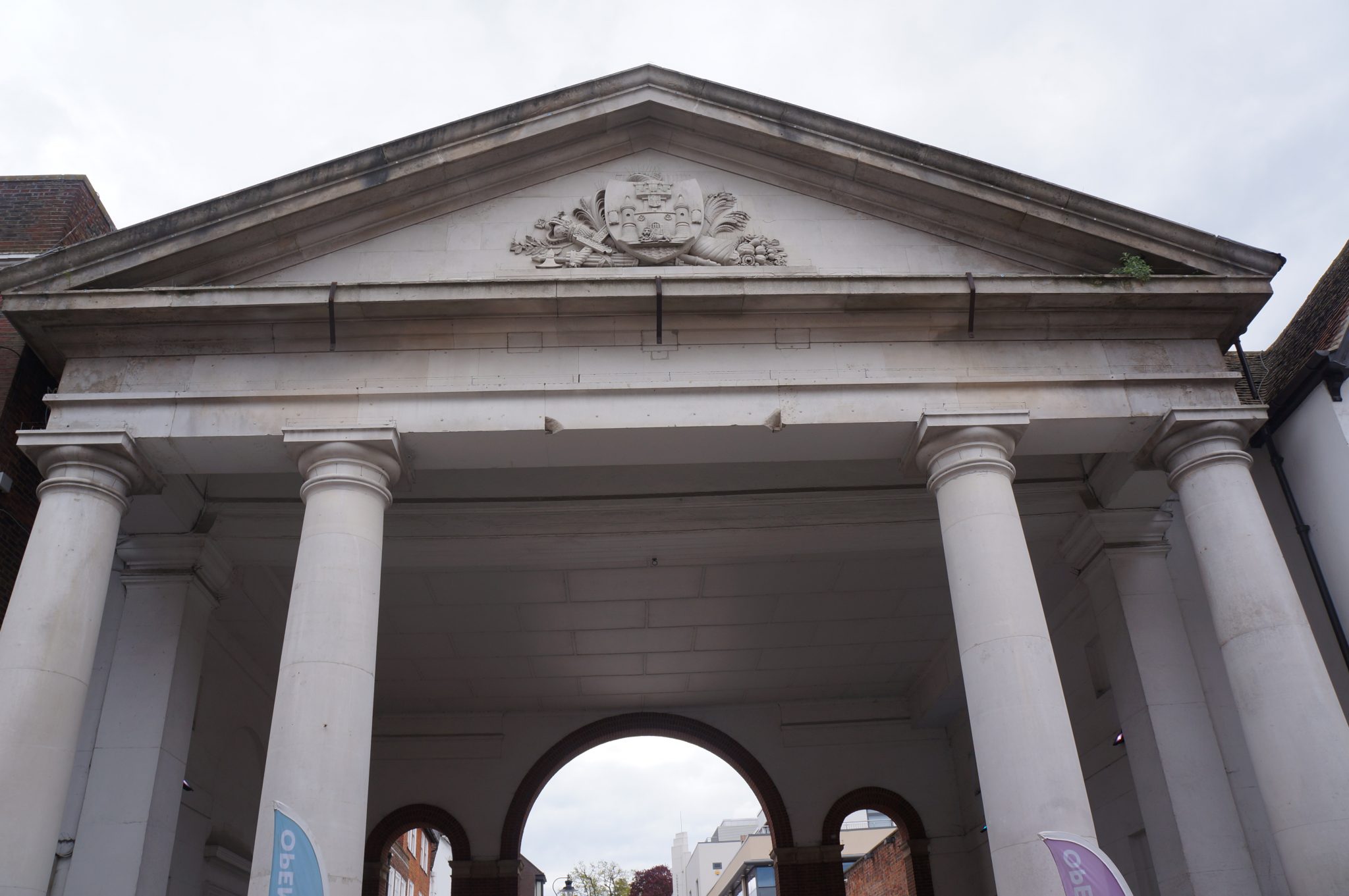
Two sections of stone missing from the central section of Tunsgate Arch. Click on the photo to enlarge it in a new window. The piece on the left had fallen from the arch prompting the repair project and the other had been removed as a precaution.
The dislodged masonry was the result of tiny movements of the stone portal over time but “the good news,” said Alistair Piper, consulting structural engineer of Cooper & Withycombe, “is that the structure is in good shape.”
The falling masonry had required Tunsgate Arch to be partially closed to pedestrians and prompted an investigation into the causes. A second piece of stone was removed as a precaution after cracks were observed.
The Grade II listed structure, built in 1818, was radically altered in 1933 when the two central columns were moved apart to allow traffic, including buses, to pass through along Tunsgate.

Three steel beams behind the Portland stone facade support the coat of arms pediment and the stone portal below it as well. The inside of the steel beams were inspected by borescope with the entry hole on the beam visible as a shiny patch.
This was done by inserting three steel beams, joined together by riveted steel plates at the top and bottom, to provide a new support for the widened arch.
The steel beams supported the weight of the classical pediment above with Guildford’s coat of arms, that includes features each side relating to the use of the structure as a corn market and court house. The stone beam, which had originally been resting on the columns, was hung by four steel rods from the steel beams.
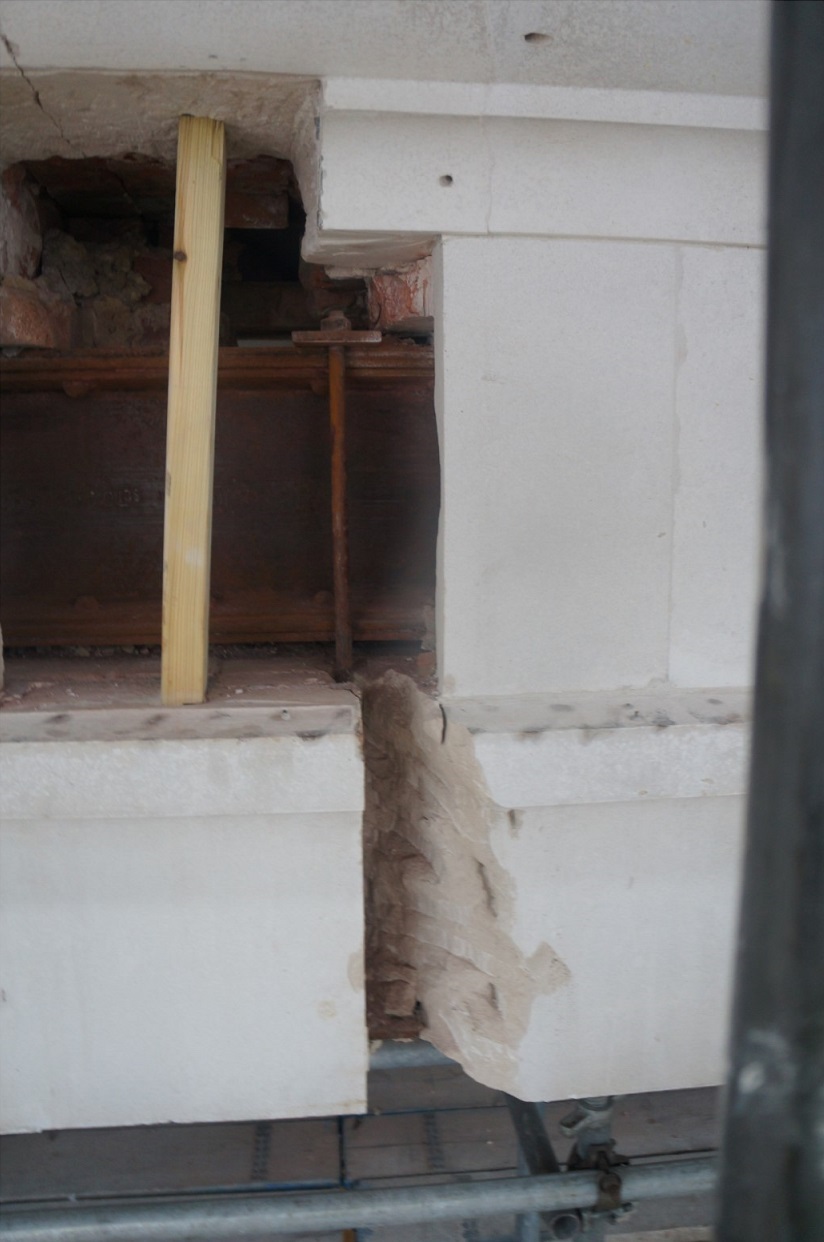
The stone beam, which had been originally supported on the stone columns, is held up by four steel rods hanging from the steel beam. The hanging rods will be replaced with stainless steel. The wooden prop is temporary.
Rob Kember, the site manager for the specialist stone and restoration company, PAYE, said: “You don’t know what you are facing when you open up a structure like this. It can be slow work.
“Apart from the main repairs, we have also taken out about 25 small patches which will be replaced with Portland stone. All minor repairs are carried out using a lime and Portland stone dust mix to match in with the existing stone.”
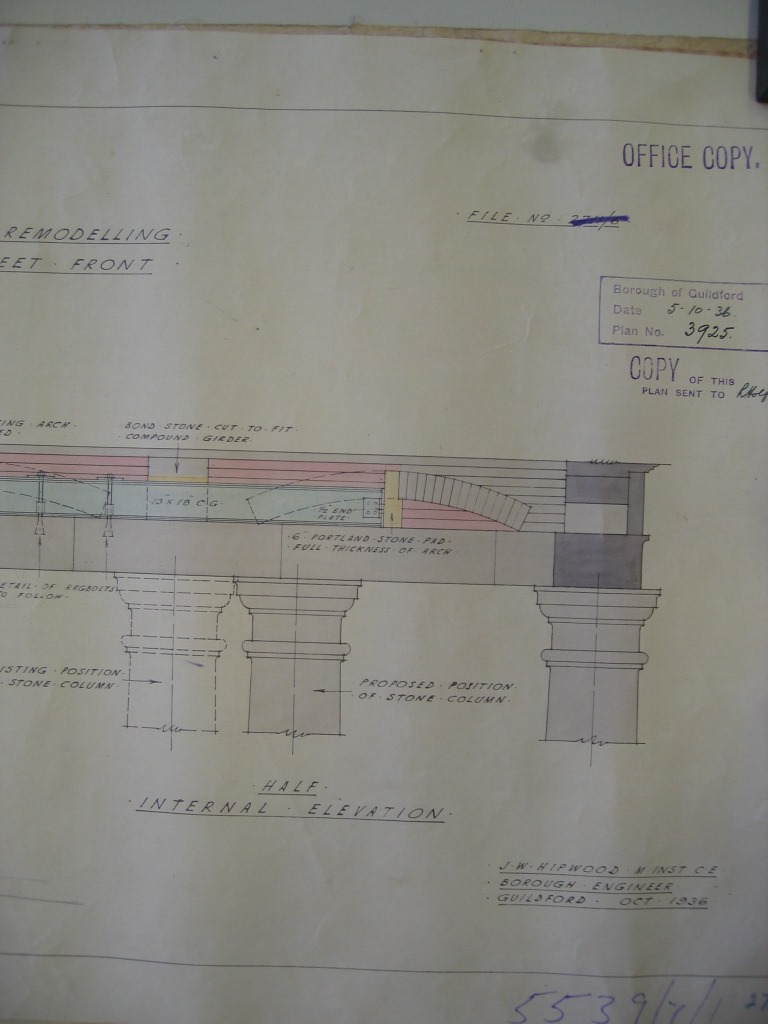
Part of a drawing showing the columns moved apart, the steel beams (coloured blue) installed and the internal brick arch partially removed. The drawing is dated 1936 even though the Grade II listing says that the “front columns re-sited in 1933.”
The weather was very wet on Wednesday (August 14) when I visited. Stonemason James Smith said: “It is a lovely job when the weather is good. Seeing the steel come into view when we opened it up was interesting. The hanging rod system looks like a practical detail; it has worked well.”
James, 28, has worked as a stonemason for 12 years with 10 years working with PAYE, including working on St James’s Palace, the Magna Carta monument in Runnymede and St John’s Church in Guildford.

Team effort on Tunsgate Arch repairs. From the left, stonemason James Smith, PAYE site manager Rob Kember, and chartered surveyor Mark Graham.
Alistair Piper said that deciding what the best way to carry out the repair was a “team effort,” and: “It is important to use all the specialist knowledge available when working on these heritage buildings.”
With the scaffolding in place, Guildford Borough Council is taking the opportunity to carry out essential maintenance work on the structure. This has included fitting lead sheeting to replace the leaking roof area, repairing some rotten wooden pieces in the area behind the portal, cleaning the stone facing and replacing the pigeon deterrent spikes on the coat of arms with unobtrusive netting.

A Dennis Loline 357 bus emerging from Tunsgate Arch. Buses did not pass through the arch on scheduled routes. The photo was a mock-up taken early one Sunday morning before the High Street was part-pedestrianised and Tunsgate closed to traffic. Photo courtesy of Peter Trevaskis – Aldershot & District Bus Interest Group.
Building surveyor Mark Graham, working with heritage property for Guildford Borough Council, said: “We will be adding hatches to the rear of the beams to make future inspections much easier. GBC will be introducing an asset management system for all its structures. Ideally for these heritage structures, it should be inspected every five years.
“This was very much an unscheduled project. Because of the cost, we have had to defer some work, mostly redecoration, on the Guildhall which was programmed for this year.”
The cost of the works on Tunsgate Arch is £115k and a large part of that cost has been for the access scaffolding which is a structure in its own right. It had to be strong enough to temporarily carry the full weight of the portal and it had to stand alone without being tied into the Grade II listed arch. “It was complex and had to be specially designed.” said Alistair Piper.
With between six to eight weeks for the replacement Portland stones to be selected, quarried and cut, the works are due to be completed on September 20.
Responses to Historic Tunsgate Arch’s Renovation Work Is Revealed
Leave a Comment Cancel replyPlease see our comments policy. All comments are moderated and may take time to appear.
Recent Articles
- Guildford Institute’s Crowdfunding Project for Accessible Toilet in its New Community and Wellbeing Centre
- Letter: Guildford – Another Opportunity Missed?
- Letter: GBC’s Corporate Strategy – Where Is the Ambition?
- My Memories of John Mayall at a Ground-breaking Gig in Guildford Nearly Six Decades Ago
- Westborough HMO Plans ‘Losing the Heart of the Street’ Says Resident
- College Invests to Boost Surrey’s Economy and Close Digital Skills Gap
- Community Lottery Brings Big Wins for Local Charities
- GBC Housing Plan Promises ‘A Vibrant Urban Neighbourhood’ Near Town Centre
- Hospital Pillows ‘Shortage’ at the Royal Surrey
- Updated: Caravans Set Up Camp at Ash Manor School


Recent Comments
- Ian Macpherson on Updated: Main Guildford to Godalming Road Closed Until August 1
- Sara Tokunaga on GBC Housing Plan Promises ‘A Vibrant Urban Neighbourhood’ Near Town Centre
- Michael Courtnage on Daily Mail Online Reports Guildford Has Highest-paid Council Officer
- Alan Judge on GBC Housing Plan Promises ‘A Vibrant Urban Neighbourhood’ Near Town Centre
- John Perkins on GBC Housing Plan Promises ‘A Vibrant Urban Neighbourhood’ Near Town Centre
- S Collins on GBC Housing Plan Promises ‘A Vibrant Urban Neighbourhood’ Near Town Centre
Search in Site
Media Gallery
Dragon Interview: Local Artist Leaves Her Mark At One of England’s Most Historic Buildings
January 21, 2023 / No Comment / Read MoreDragon Interview: Lib Dem Planning Chair: ‘Current Policy Doesn’t Work for Local People’
January 19, 2023 / No Comment / Read MoreA3 Tunnel in Guildford ‘Necessary’ for New Homes, Says Guildford’s MP
January 10, 2023 / No Comment / Read More‘Madness’ for London Road Scheme to Go Ahead Against ‘Huge Opposition’, Says SCC Leader
January 6, 2023 / No Comment / Read MoreCouncillor’s Son Starts Campaign for More Consultation on North Street Plan
December 30, 2022 / No Comment / Read MoreCounty Council Climbs Down Over London Road Works – Further ‘Engagement’ Period Announced
December 14, 2022 / No Comment / Read MoreDragon Interview: GBC Reaction to the Government’s Expected Decision to Relax Housing Targets
December 7, 2022 / No Comment / Read MoreHow Can Our Town Centre Businesses Recover? Watch the Shop Front Debate
May 18, 2020 / No Comment / Read More




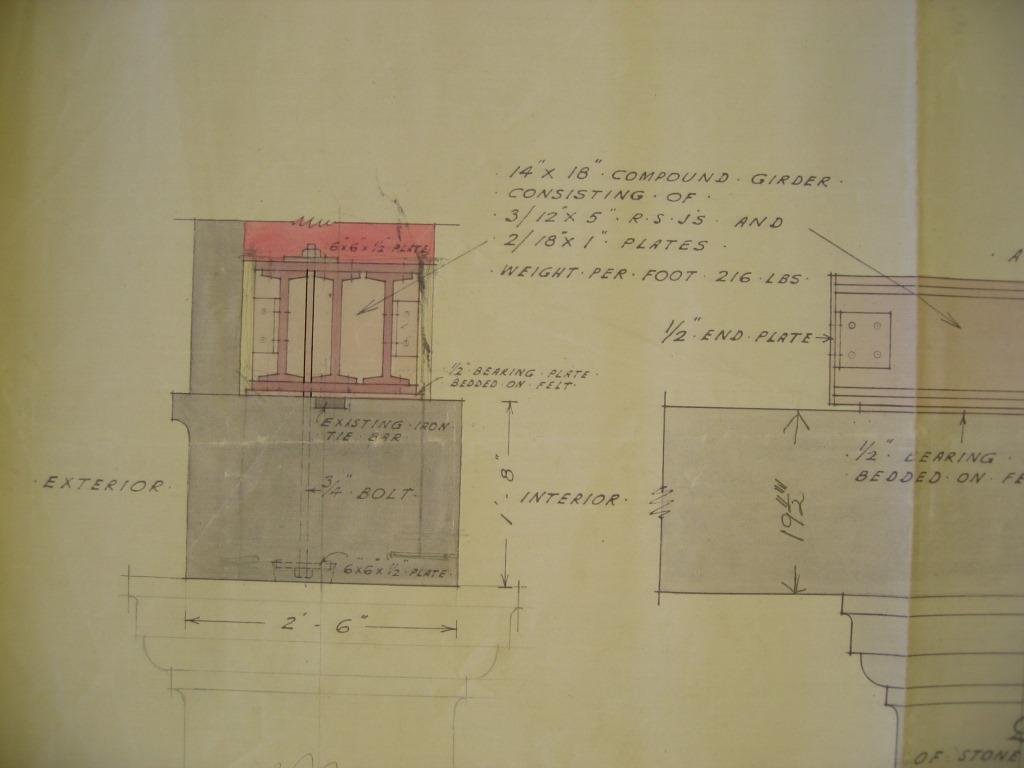
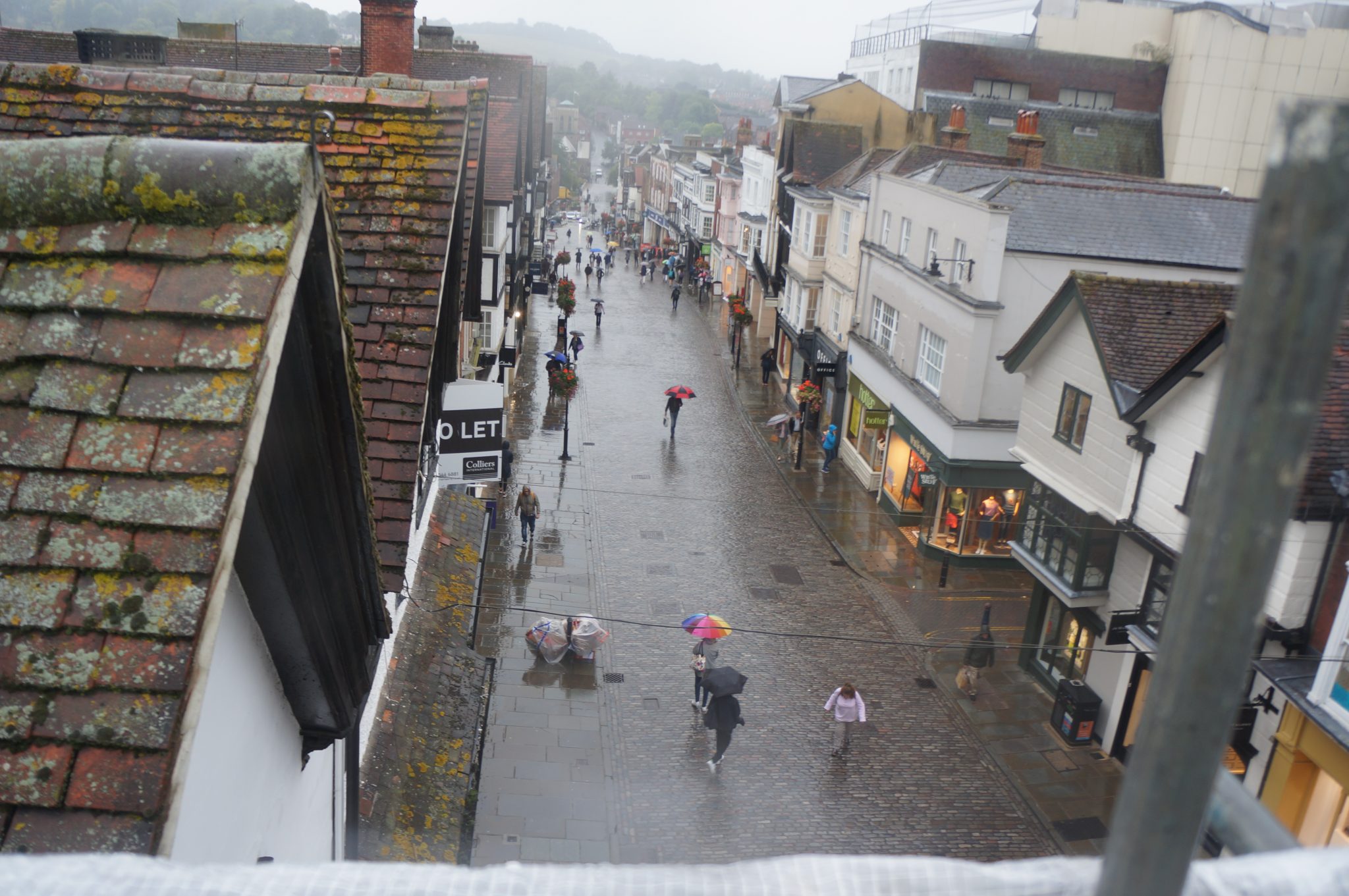






John Lomas
August 15, 2019 at 11:26 am
The caption under the black and white picture says there were no scheduled routes that way. I certainly don’t remember, from the 1950s, any routes using the High Street between the Quarry Street junction and the North Street junction.
But I would be interested to know if there were any earlier scheduled routes that did use it and Tunsgate as well.
[David Rose adds: Further to the picture of the bus under the arch, I am sure the owner of the preserved bus, Peter Trevaskis, once told me it wasn’t driven through the arch at all to create the photo, but backed into it. An early morning stunt!]
Keith Francis
August 15, 2019 at 10:08 pm
The late Jock Cairns who had a fruit, vegetable and flower stall under Tungsgate Arch, plus, his own red telephone box would be pleased that “his Arch” is being repaired.
David Godden
August 16, 2019 at 7:56 am
Very interesting, thanks.